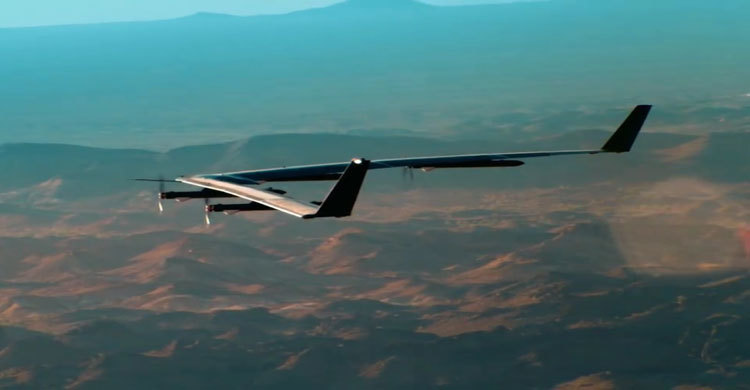Facebook’s solar-powered internet drone passes first test

Facebook announced Thursday it had completed its first successful test of its solar-powered Aquila drone, being develop to deliver Internet service to remote areas of the world.
The test flight represents a ‘major milestone’ for Facebook’s efforts to bring the Internet to underserved locations of the planet.
Facebook had conducted previous test flights using a one-fifth scale version of Aquila for several months, but this was the first time using the full-scale aircraft, which has a wingspan greater than that of a 737 passenger jet.
‘It was so successful that we ended up flying Aquila for more than 90 minutes - three times longer than originally planned,’ said Jay Parikh, Facebook`s global head of engineering and infrastructure, in a statement.
‘We’re encouraged by this first successful flight, but we have a lot of work ahead of us,’ Parikh said.
‘In fact, to reach our goal of being able to fly over a remote region and deliver connectivity for up to three months at time, we will need to break the world record for solar-powered unmanned flight, which currently stands at two weeks. This will require significant advancements in science and engineering to achieve.’
The plan ‘will also require us to work closely with operators, governments and other partners to deploy these aircraft in the regions where they`ll be most effective,’ he added.
Facebook founder Mark Zuckerberg posted a video of the flight on his Facebook page, saying it was the result of ‘two years of engineering.’
Zuckerberg has stated that one of his goals is helping to connect everyone in the world online, and the Aquila program developed by Facebook’s Connectivity Lab is a key part of that effort.
‘Internet access can offer life-changing opportunities and experiences to all of us, but there are still four billion people without it,’ said Parikh.
‘That’s 60 percent of the global population. As many as 1.6 billion of those unconnected people live in remote locations with no access to mobile broadband networks, where implementing existing network technologies is so challenging and costly that it will take years to bring everyone affordable access.’


